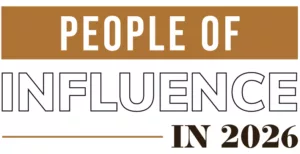
Home » High-end home sales shoot up
High-end home sales shoot up
Due to low mortgage rates, high-priced home range is fastest growing segment
February 26, 1997
Guess what segment of the Spokane-area home market is growing the fastest?
The $100,000-to-$124,999 range? Thats the largest, but not the fastest growing.
The $150,000-to-$199,999 range? Its growing briskly, but its not the fastest growing, either.
Home sales in the highest selling-price rangethe $250,000-and-up bracketare shooting up more rapidly than those in any other segment of the market, says the Spokane Multiple Listing Service.
Last year, 337 homes in Spokane County sold through the Spokane MLS for prices of a quarter-million dollars or more, up 38 percent from the 245 homes that sold for such prices in 2001, the Spokane MLS says. The 2002 total was well over double the number of homes that sold in the highest price range in 1997.
Sales in the two next highest-priced segments of the market also increased. In the $200,000-to-$249,999 range, 343 homes sold in 2002, or 9 percent more than the year earlier. Similarly, in the $150,000-to-$199,999 range, 887 homes sold in 2002, up 14 percent from 2001.
If this were the mid-1990s, Spokane-area real estate sources say, the story might be about an influx of Californians who had sat through one too many traffic jams and decided to move north, selling ordinary homes down there for high prices and using their equity to buy luxury homes up here.
Thats not the case, though, observers say. They say Inland Northwest residents make up the bulk of the buyers in the $250,000-and-up range.
Id say probably 70 percent of that market is local people moving up or moving down, says Kathy Bixler, a real estate agent with Tomlinson Black South Inc., of Spokane, who specializes in marketing upper-end properties.
Real estate sources attribute the increase in sales of high-end homes to two factors, the biggest being the historically low mortgage rates that have prevailed in recent months.
Rates for a 15-year mortgage are hovering at or below 5 percent, and theyre between 5 percent and 6 percent for a 30-year mortgage. When home buyers can borrow money at such rates, that cuts the amount of interest they must pay on their mortgage every month, reducing their payment and making it possible for them to buy homes at higher prices than they could otherwise.
The current low-rate environment has caused the real estate industry to alter a long-standing theory about how much move-up buyers can afford to pay for their next house, says Jim Dashiell, president of the Spokane Association of Realtors. Dashiell adds that such buyers make up the bulk of the buyers of higher-end homes here.
The longtime theory has held that move-up buyers typically will spend 50 percent to 58 percent more for a new home than the amount for which they can sell their current house, Dashiell says. For example, if a family can sell its house for $100,000, typically it would buy its next house for between $150,000 and $158,000, he says.
Now, however, that rule of thumb has been amended. Agents now expect that move-up buyers likely will spend 60 percent to 68 percent more for a new home than the amount they can get for their current home, he says. Under the amended theory, the industry expects that homeowners who can sell their houses for $156,250 will move up to homes for which theyll pay $250,000 to $262,500. Heretofore, those move-up buyers would have been expected to pay from $234,000 to just under $247,000 for new homes.
Of course, if youre selling a house, it also helps to have a brisk market, and the 6,240 home sales made through the MLS last year set a record high. Sales still are clipping along at a good pace so far this year, with 1,723 homes sold through the MLS through April, compared with 1,482 in the year-earlier period. Meanwhile, average home sale prices have continued to rise this year, jumping to $127,000 through the first four months of the year, up from $118,000 in the year-earlier period.
Domino effect
Real estate professionals say another theory for the increase in sales of higher-end homes is that some of those sales are the result of a chain of events triggered by the overall increase in market activity and a key change in the lower end of the market.
A couple of years ago, much of the sales activity in the lower end of the marketof homes that sold for $85,000 or lessinvolved sealed-bid auctions of so-called HUD homes, Dashiell says. Such homes are sold by the U.S. Department of Housing and Urban Development after the federal agency, which insures mortgages, gets the homes after they go into default.
Two years ago, HUD had more than 100 such homes on the market at times, and Spokane-area homeowners who were trying to sell lower-priced houses often struggled to unload their properties because of the extra supply of homes the federal agency put on the market, Dashiell says. That slowness in sales affected the ability of those homeowners to buy more expensive homes.
In the last two years, the number of HUD homes on the market has fallen off dramatically, primarily because of an easing of predatory lending practices that had fueled foreclosures, Dashiell says. Earlier this month, for example, HUD was marketing only nine homes for sale.
With less competition from HUD, owners of lower-priced homes have been able to sell their properties more quickly and buy more-expensive homes, which, in turn, also helps sellers in the next price range to move up, Dashiell says.
Its a domino effect that goes clear through the market in all price ranges, he says.
Sabrina Jones-Schroeder, managing broker of Gregg Jones & Associates, says, There is a fair amount of people moving up the food chain, so to speak.
Jones-Schroeder says that in some cases, the people who are buying homes in the upper price ranges are professionals who are moving up from homes in the $150,000 to $200,000 level.
In some instances, however, empty nesters who have big houses are downsizing to smaller, yet still high-end, homes in planned-unit developments, she says. Such a downsizing typically means a buyer whose children have grown up and moved away chooses to move to a home with less square footage, but for which they dont necessarily pay less than they get for the home they move out of.
Jones-Schroeder says she has sold some homes to people who have moved here from large metropolitan areas, so in-migration continues to account for some sales in the high-end market.
Dashiell says hed like to see more of that. Such activity would add strength to the market, which is busy largely because of low mortgage rates, he says.
What will happen when interest rates rise a couple of percentage points?
Bixler says rates wont go back up until the economy improves, and a more healthy economy should make up for any drop in home-sales activity caused by higher mortgage rates then.
Besides, she says, the Spokane housing market largely was flat from 1994 to 2001, so the recent awakening of the buyer should continue to spur activity for a time.
My personal opinion is that well see appreciation in our market for the next five years, Bixler says. Were seeing stronger sales and more buyers. Hopefully, our market will continue to improve.
Latest News
Related Articles



_web.webp?t=1764835652)
